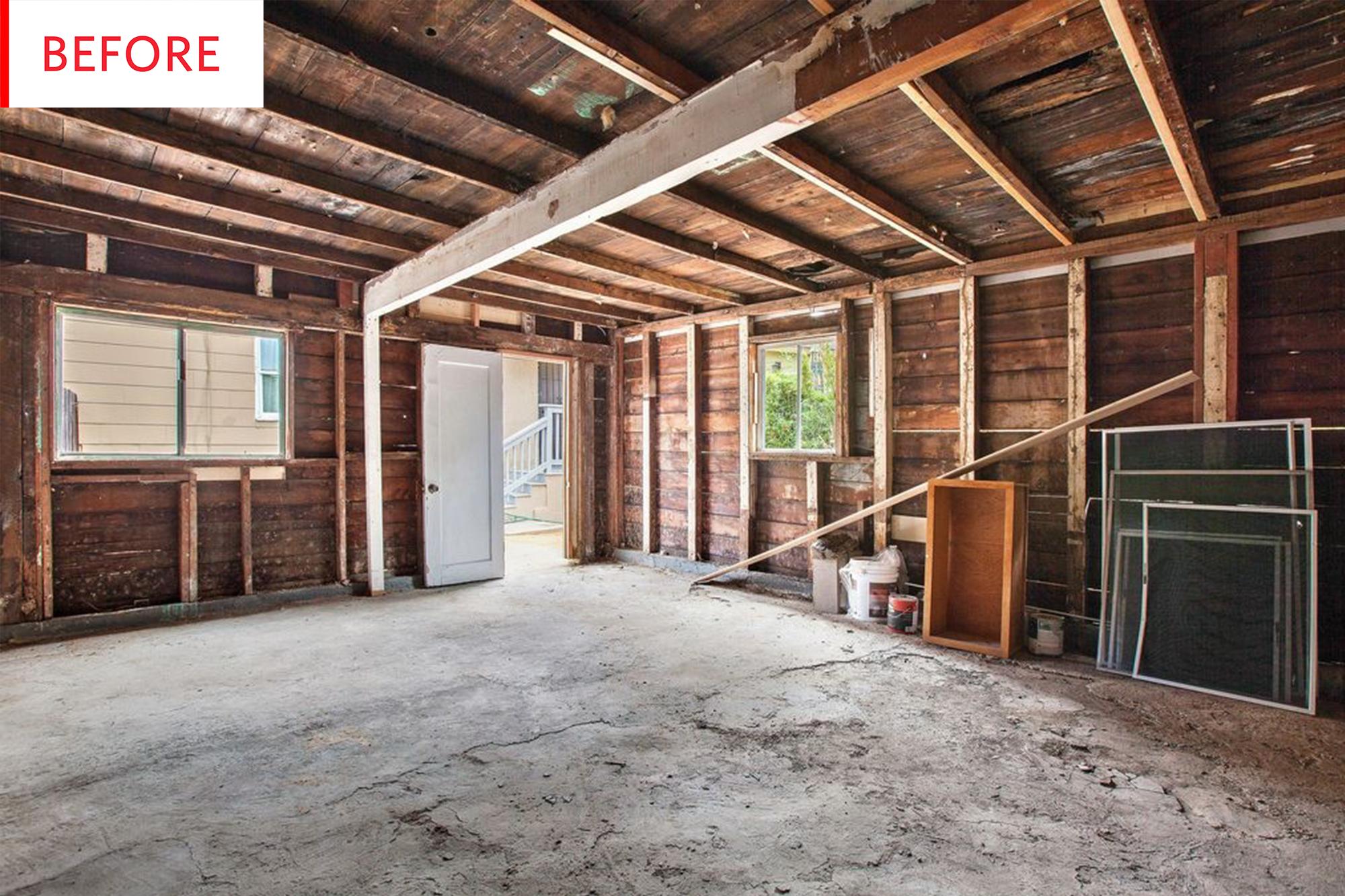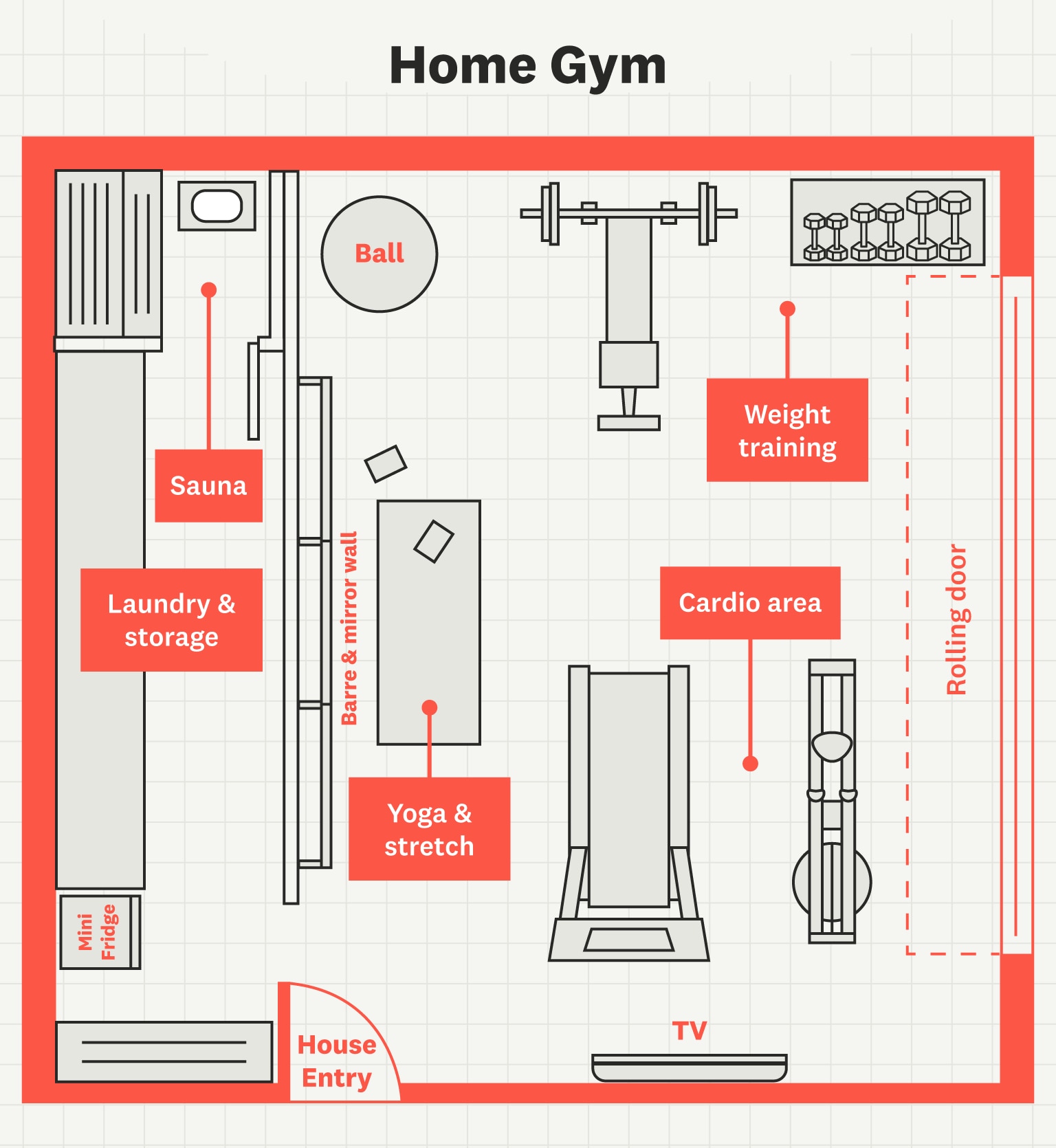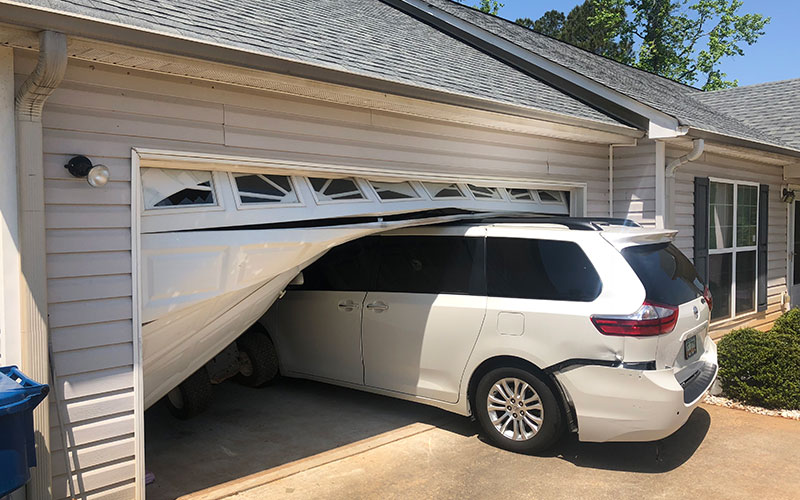
A garage sensor is a device which makes life easier and more secure. A sensor usually consists two parts: an emitter or receiver. When both are aligned, the light emitted from the emitter will be reflected to the receiver. If the beam is disrupted, the door won't close.
A door sensor usually has a small LED that lights up to let you know where it's at. An LED light is not the only thing that a garage door sensor has. It may also contain a battery. The most common battery is a lithium 3VCR2450. This is the most widely used battery for garage door openers. You should therefore test your door opener before opening it again.
Use a gentle cleaner to clean your garage door sensor. A soft cloth is best. It is possible to break the light beam if the dirt becomes too stubborn. You can hire a professional to do a thorough clean.

The most common reason a garage door sensor fails to function is because it is not aligned properly. Generally, these sensors are designed to be positioned at equal heights and to face each other. They can be easily knocked out-of-align.
An assortment of things can lead to misaligned sensor, such as improper mountings or loose screws. You can correct loose screws by tightening brackets. After doing so, it is a good idea to check the sensors to make sure they are working properly.
Overtightened wires are another reason why a sensor might not work as it should. Overtightened wires can eventually cause damage to the wire. This problem can be avoided by having your technician conduct an inspection. If the technician discovers the problem, they can replace it.
Sometimes, however, the door sensor may malfunction due to other causes. It is important to have a technician visit your home to fix a malfunctioning safety sensors. This is especially important in humid areas, as moisture can damage the light beam.

The above-mentioned problem is the most common reason for a door sensor malfunction, but there are more serious issues. The safety sensor could lose power if someone or an animal gets into the opening. A similar situation can occur if the light beam is disrupted by obstructions, such as a ball. Whatever the cause, a misaligned sensors can be fixed with the correct equipment and knowledge. You should consult a garage door expert for any of these and other issues.
Garage door sensors are safe and simple to fix, but they can still fail. Some of the most common failures are caused by wind, sunlight, and obstructions, so it is always a good idea to have the garage door serviced by a professional.
FAQ
How can you tell if your house needs renovations or a remodel?
First, consider whether your home has been updated in recent times. A renovation may be a good idea if there have been no updates for several years. If your home appears brand-new, you might consider a renovation.
Your home's condition is also important. A renovation may be necessary if your home has holes in its drywall, cracked wallpaper, or missing tiles. A remodel is not necessary if your home appears to be in great condition.
Another factor to consider is the general state of your home. Is your house structurally sound? Are the rooms well-lit? Are the floors spotless? These are crucial questions when deciding on the type of renovation to do.
How much would it cost to gut a home vs. how much it cost to build a new one?
A home gutting involves the removal of all interior items, including walls, floors ceilings, plumbing and electrical wiring, fixtures, appliances, and fixtures. This is usually done when you are moving into a new home and need to make some adjustments before you move in. Due to so many factors involved in the process of gutting a property, it can be very costly. Depending on your job, the average cost to gut a home can run from $10,000 to $20,000.
The process of building a home involves the construction of a house from one frame to another. Next, the builder adds walls, flooring and roofing. This is typically done after purchasing lots and lots of lands. Building a home is normally much less expensive than gutting, costing around $15,000-$30,000.
It comes down to your needs and what you are looking to do with the space. You'll likely need to spend more money if you want to gut a property. However, if you want to build a home, you won't have to worry about ripping everything apart and redoing everything. Instead of waiting for someone to tear it down, you can make it exactly how you want.
Is it cheaper to remodel a bathroom or kitchen?
Remodeling a bathroom or kitchen can be expensive. However, when you consider how much money you pay each month for energy bills, upgrading your home might make more sense.
An inexpensive upgrade can save you thousands of dollars every year. Simple changes such as insulation in ceilings and walls can help reduce cooling and heating costs by up to 30%. Even a minor addition can increase comfort levels and increase the resale value.
When planning for renovations, it is important to select durable and easy-to-maintain products. Materials like porcelain tile, solid wood flooring, and stainless-steel appliances will last longer and need fewer repairs than vinyl countertops.
You might also find that replacing old fixtures by newer models can reduce utility expenses. Low-flow showerheads or faucets can help reduce water usage by up 50 percent. Replacing inefficient lighting with compact fluorescent bulbs can cut electricity consumption by up to 75 percent.
What's included in a complete kitchen remodel?
A full kitchen remodels more than just a new sink and faucet. Cabinets, countertops, appliances and lighting fixtures are just a few of the many options available.
Full kitchen remodels allow homeowners to modernize their kitchens without the need for major construction. This means that no demolition is required, making the project easier for both the homeowner and the contractor.
Many services are required for kitchen renovations, such as electrical, plumbing and HVAC. Depending on the extent of the kitchen remodel, multiple contractors may be required.
It is best to work with professionals who have experience in kitchen remodeling. Small issues can lead to delays when there are many moving parts involved in a kitchen remodel. If you choose a DIY approach, make sure you plan and have a backup plan in place in case things go wrong.
Is $30000 too much for a kitchen redesign?
You can expect to pay anywhere from $15000-$35000 for a kitchen overhaul, depending on how much money you have available. For a complete renovation of your kitchen, you can expect to pay over $20,000. You can get a complete kitchen overhaul for as little as $3000 if you just want to replace the countertops or update your appliances.
An average cost for a complete renovation is between $12,000-$25,000. However, there are ways to save without sacrificing quality. A new sink can be installed instead of replacing an older one. This will cost you approximately $1000. Or you can buy used appliances for half the price of new ones.
Kitchen renovations take more time than other types. So plan accordingly. It is not a good idea to begin work in your kitchen and realize that you will run out of time.
Your best bet is to get started early. Start by looking at different options and getting quotes from contractors. You can then narrow your choices by price, availability, and quality.
Once you have identified potential contractors, request estimates and compare their prices. The lowest-priced bid isn't always the best choice. It is important that you find someone with comparable work experience to provide an estimate.
When calculating the final cost, remember to add all extras. These may include labor or material charges, permits and so forth. Be realistic about your financial limitations and stay within your budget.
Be honest if you are unhappy with any bid. If you don't like the first quote, tell the contractor why and give him or her another chance. Don't let your pride prevent you from saving money.
Why should I remodel my house rather than buy a new one?
Although it is true that houses become more affordable every year, you still pay for the same area. Even though you may get a lot of bang for your buck, you also pay a lot for that extra square footage.
It is less expensive to maintain a house that does not require much maintenance.
You can save thousands by remodeling instead of buying a new home.
Remodeling your home will allow you to create a space that is unique and suits your life. You can make your home more welcoming for you and your loved ones.
Statistics
- bathroom5%Siding3 – 5%Windows3 – 4%Patio or backyard2 – (rocketmortgage.com)
- According to a survey of renovations in the top 50 U.S. metro cities by Houzz, people spend $15,000 on average per renovation project. (rocketmortgage.com)
- Following the effects of COVID-19, homeowners spent 48% less on their renovation costs than before the pandemic 1 2 (rocketmortgage.com)
- About 33 percent of people report renovating their primary bedroom to increase livability and overall function. (rocketmortgage.com)
- 55%Universal average cost: $38,813Additional home value: $22,475Return on investment: 58%Mid-range average cost: $24,424Additional home value: $14,671Return on investment: (rocketmortgage.com)
External Links
How To
How to Install Porch Flooring
Installing porch flooring is easy, but it does require some planning and preparation. It is best to lay concrete slabs before you install the porch flooring. However, if you do not have access to a concrete slab, you can lay a plywood deck board instead. This allows you to install your porch flooring without spending a lot of money on a concrete slab.
Before installing porch flooring, you must secure the plywood as the subfloor. Measure the width of your porch to determine the size of the plywood strips. These should be placed on each side of the porch. Next, nail them into place and attach them to the walls.
You must prepare the area in which you plan to place the porch flooring after you secure the subfloor. This is usually done by cutting the top layers of the floorboards down to the appropriate size. Finish the porch flooring by applying a finish. A polyurethane is a common finish. You can stain your porch flooring. You can stain your porch flooring more easily than applying a clear coating. All you need to do is sand the stained area after applying the final coat.
Now you are ready to put in the porch flooring. Start by measuring and marking the location of the porch flooring. Next, cut the porch flooring according to your measurements. Finally, set the porch flooring in place and fasten it using nails.
You can install porch stairs if you want to add more stability to your porch flooring. Porch stairways are typically made of hardwood. Some people like to install their porch stairs before they install their porch flooring.
Now it's time to finish your porch flooring project. First, you must remove the porch flooring and replace it with a new one. Next, clean up all debris. Remember to take care of the dust and dirt around your home.